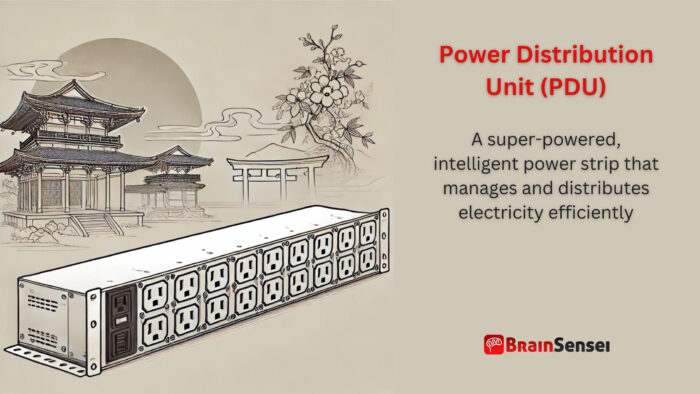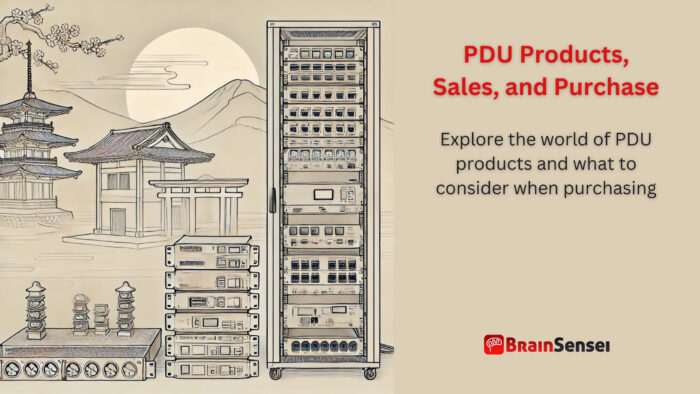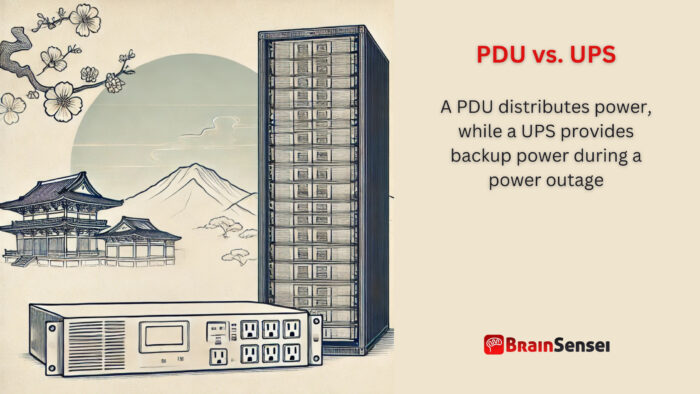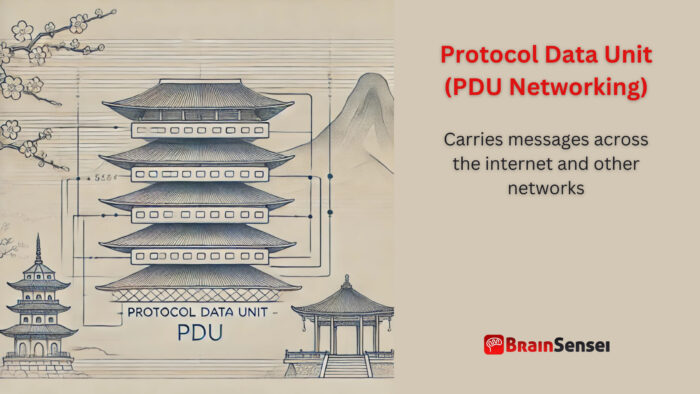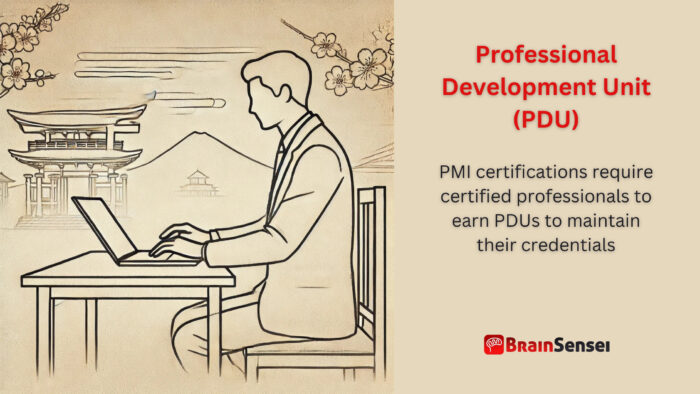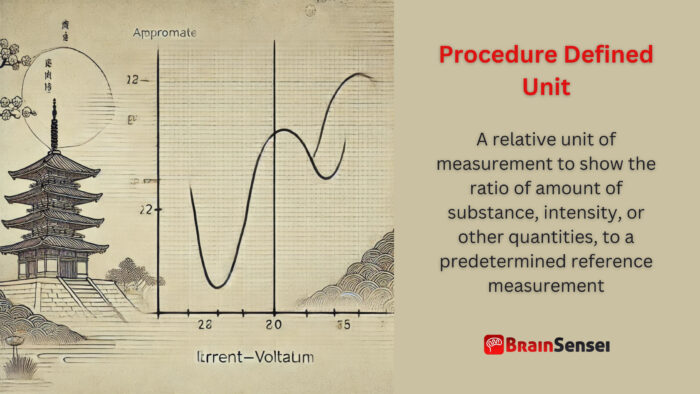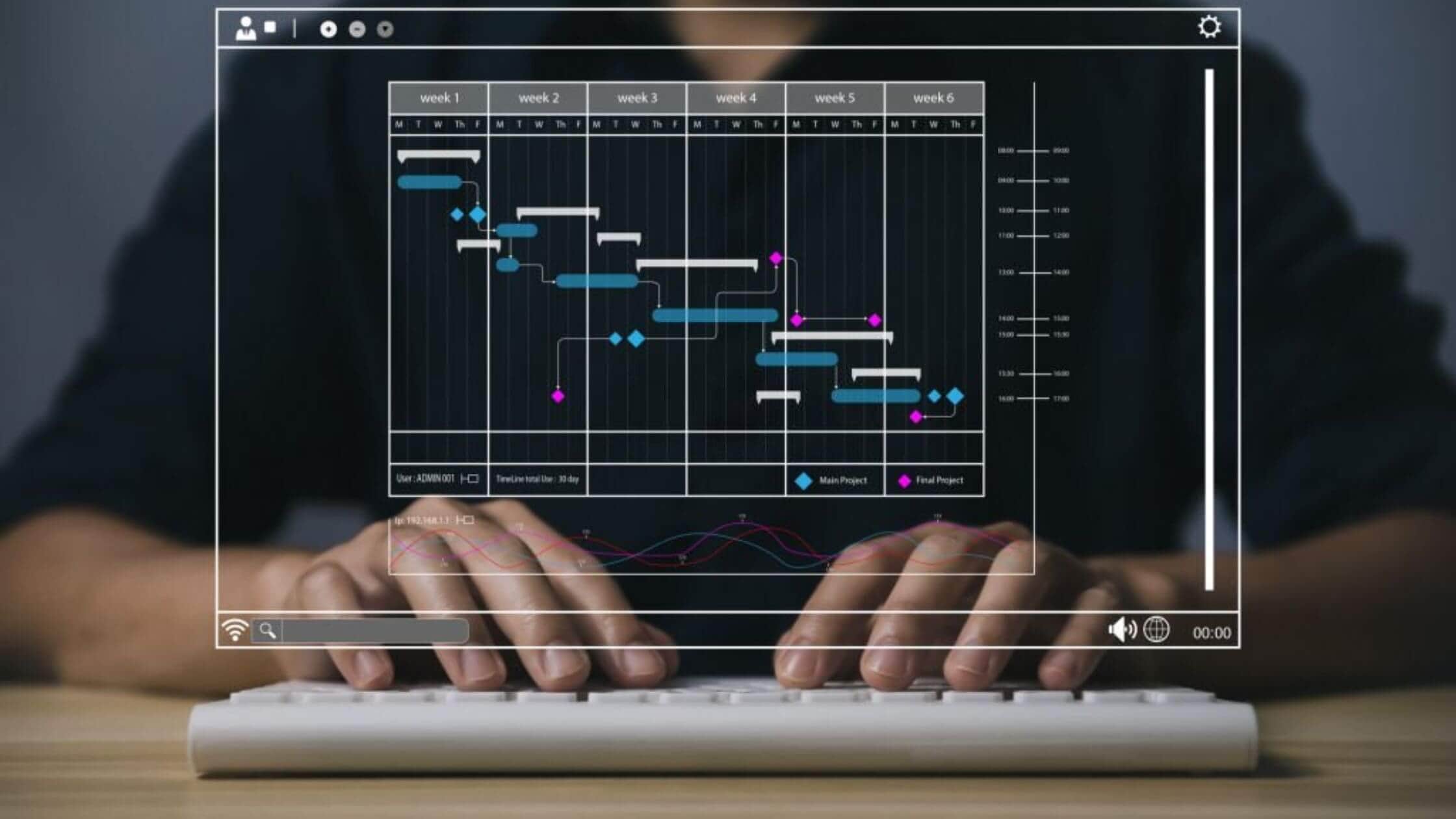
PDU
PDU: Professional Development Units or Power Distribution Units?
PDU may refer to Professional Development Units (PDUs), credits toward certification or re-certification at the Project Management Institute (PMI). They can also refer to Power Distribution Units (PDUs) for electrical power.
Click on the appropriate link below for more information.
- Professional Development Unit, credits toward certification or re-certification at Project Management Institute (PMI) such as Brain Sensei’s PDU Bundles
- Power distribution unit for electrical power
- Partia për Drejtësi dhe Unitet (Party for Justice and Unity), a former political party in Albania
- Partidul Democrat al Unirii (Democratic Union Party), a political group in Romania
- Paysandú Airport (IATA: PDU)
- Procedure defined unit, a unit of measurement relative to a specific application
- Project for Democratic Union, a European open-source think tank
- Protocol data unit in telecommunications
Power Distribution Unit (PDU) Definition/Basics
Have you ever wondered how data centers, with their countless servers and computers, get the power they need? It’s not as simple as plugging everything into a wall outlet! They rely on a crucial piece of equipment called a Power Distribution Unit (PDU). A PDU is a super-powered, intelligent power strip that manages and distributes electricity efficiently.
What is a PDU?
At its core, a PDU efficiently manages and distributes a single, high-power electrical input to multiple outlets, allowing many devices to receive power from one source. This understanding will make you feel knowledgeable and competent in managing power distribution in complex environments like data centers, server rooms, and network closets.
Understanding the Function
A PDU’s primary function is to distribute electrical power safely and reliably. They ensure that each connected device receives the correct voltage and current, preventing overloads and potential damage.
They take the primary power source and split it into many different outlets. This functionality is essential when many devices need power.
The Role in Data Centers
Data centers are the heart of our digital world, housing the servers that power websites, cloud services, and online applications. PDUs are essential in these environments, providing the power to keep everything running smoothly. They help organize power cables, optimize power distribution, and provide valuable insights into energy consumption. They are a key part of the infrastructure that allows data centers to function.
Electrical Power Distribution Basics
PDUs play a vital role in electrical power distribution by managing the flow of electricity to connected devices. They help prevent power surges, which can damage sensitive electronics. Some PDUs even offer advanced features like remote monitoring and control, allowing administrators to track power usage and identify potential issues. They allow for the safe distribution of electrical power.
In simple terms, a PDU distributes electricity to many devices. They are essential in places with many electrical devices.
By understanding the basics of PDUs, you gain insight into how these essential devices help keep our digital world running smoothly. They are the backbone of reliable power in many tech environments.
PDU Products/Sales/Purchase: Finding the Right Power Solution
Imagine you’re setting up a computer lab, a home server rack, or even a small office network. You need a reliable way to power all your equipment. That’s where Power Distribution Units (PDUs) come in. But with so many options available, how do you choose the right one? Let’s explore the world of PDU products and what to consider when purchasing.
Understanding Your PDU Needs
Before you buy a PDU, it’s essential to understand your specific requirements. How many devices do you need to power? What type of power outlets do they require? Do you need advanced features like remote monitoring or surge protection? Answering these questions will prepare you to make informed decisions and ensure you get the right PDU for your needs.
Exploring PDU Models
You’ll find various PDU models designed for different applications. Rack PDUs fit into server racks, which is ideal for data centers and server rooms. Smart PDUs offer advanced features like remote monitoring and control, allowing you to track power usage and manage your devices from anywhere. Different situations require different PDU models.
Choosing the Right Features
When looking at PDU products, consider the features that are most important to you. Surge protection safeguards your equipment from power spikes. Remote monitoring allows you to track power consumption and identify potential issues. Managed PDUs offer even greater control, allowing you to switch individual outlets remotely. The features of a PDU are essential to consider.
Where to Find PDUs for Sale
You can find “PDUs for sale” from various sources, including online retailers, electrical supply stores, and specialized technology vendors. When shopping, compare prices, features, and customer reviews to make an informed decision. Remember to consider the reputation of the vendor and the warranty offered. Many different vendors sell PDUs.
When you are ready to buy a PDU, consider the number of devices you need to power and the features you need.
Finding the right PDU can seem daunting, but by understanding your needs and exploring the available options, you can choose a power solution that meets your requirements and keeps your equipment running smoothly.
PDU vs. UPS/Related Comparisons: Choosing the Right Power Protection
When setting up a computer system, whether it’s for a home office, a classroom, or a data center, you’ll encounter different power protection devices. Two common ones are Power Distribution Units (PDUs) and Uninterruptible Power Supplies (UPSs). You might also hear about surge protectors. So, which one do you need? Let’s break down the differences and explore “data center power solutions.”
Understanding the PDU Differences
It’s important to understand that a PDU, a UPS, and a surge protector each have distinct roles. Knowing these differences will help you make an informed decision about which one best fits your needs.
PDU vs. Surge Protector
A PDU primarily distributes power to multiple devices, often in a server rack. While some PDUs include surge protection, their primary function is power distribution. A surge protector, on the other hand, is specifically designed to protect devices from voltage spikes. So, if you need to protect against surges, a surge protector is the best option. A PDU might have this feature, but it is not its primary function. A PDU distributes, and a surge protector protects from voltage spikes.
PDU vs. UPS
A PDU distributes power, while a UPS provides backup power during a power outage. A UPS contains a battery that kicks in when the main power fails, giving you time to save your work and shut down your equipment safely. PDU applications focus on distribution, while UPS use cases involve power backup.
Choosing the Right PDU Solution
When considering “data center power solutions,” you’ll likely need PDUs and UPSs. PDUs ensure efficient power distribution, while UPSs provide essential backup power. The best solution depends on your specific needs and the level of protection you require. Remember that each device has a particular role. Often, a combination of devices is needed.
In simple terms, PDUs distribute power, surge protectors prevent electrical spikes from damaging equipment, and UPSs provide backup power during outages.
Understanding the differences between PDUs, UPSs, and surge protectors can help you choose the right power protection solution.
Protocol Data Unit (Networking): The Language of Networks
Computers communicate over a network and don’t just send raw data. They package that data into structured units called Protocol Data Units, or PDUs. Think of PDUs as the envelopes that carry messages across the internet and other networks. While you might have heard of PDUs in the context of power, they have a completely different meaning in networking.
Understanding PDUs in Networking
In networking, a “protocol data unit” is a fundamental concept. It represents a data unit at a specific layer of the network communication model. To understand this, let’s explore how data moves across a network.
The Role of PDUs in Data Transmission
Your data is broken down into smaller pieces when you send an email or stream a video. A PDU wraps each piece, adding information like the source and destination addresses. The PDUs travel across the network, and the receiving computer reassembles them into the original data. They are the packets of data that travel across networks.
PDUs and the OSI Model
The OSI (Open Systems Interconnection) model is a framework that describes how networks communicate. Each layer of the OSI model has a specific type of PDU. For example, at the transport layer, PDUs are called segments, and at the network layer, they are called packets. Understanding the OSI model PDU helps you know how different network communication stages process data. They are a key part of the OSI model.
“PDU Networking” and Network Communication
“Network PDU” refers to the general concept of PDUs in networking. PDUs ensure that data is transmitted correctly and efficiently. Understanding how PDUs work can give insight into the inner workings of networks and how they facilitate communication between devices. They are the core of network communication.
In essence, a Protocol Data Unit in networking is a structured packet of data that moves across a network. They are essential for network communication.
So, the next time you send a message or browse the internet, remember the vital role that PDUs play in making it all possible. They are the building blocks of network communication.
Professional Development Units (PMI PDUs): Keeping Your Project Management Skills Sharp
Continuous learning is essential for project management professionals certified by the Project Management Institute (PMI). That’s where Professional Development Units (PDUs) come in. Think of PDUs as credits demonstrating your commitment to staying current with the latest project management practices.
Why PDUs Matter for PMI Certifications
PMI certifications, like the Project Management Professional (PMP), require certified professionals to earn PDUs to maintain their credentials. This continuing education requirement ensures that they remain knowledgeable and skilled in the ever-evolving field of project management.
Understanding “PMI PDUs” and Their Purpose
“PMI PDUs” are essentially continuing education credits. Professionals earn PDUs by participating in various activities, such as attending workshops, taking online courses, or volunteering. These activities help them expand their knowledge and skills, and the credits show continued education.
How to “Earn PDUs” for Your Certification
There are many ways to “earn PDUs.” You can attend PMI chapter meetings, participate in online webinars, or create project management content. The PMI provides guidelines on eligible activities and the number of PDUs you can earn for each. Project managers perform various activities to gain PDU credits.
The Importance of “PDU Certification” and “Project Management PDUs”
Maintaining your “PDU certification” demonstrates your commitment to professional development and enhances your career prospects. “Project management PDUs” specifically focus on activities that contribute to your project management knowledge and skills. This requirement ensures that you can remain relevant in your field. They are a way to stay relevant in the field of project management.
PMI PDUs are credits that project management professionals earn to maintain their certifications. They are a way to show that you are keeping your skills current.
By understanding the importance of PDUs, project management professionals can ensure they meet the requirements for maintaining their certifications and continue to excel in their careers.
Procedure Defined Unit (PDU): Measuring What Matters
Have you ever heard someone say something like, “I’m exhausted” or “That’s super bright!”? Those descriptions are vague. In science, we usually want to be more precise with our measurements. We use units like meters, grams, or litres to describe things accurately. But sometimes, scientists use a Procedure Defined Unit or PDU. It’s a way of measuring things when the exact number isn’t essential.
What is a PDU?
Imagine you’re experimenting to see how different types of fertilizer affect plant growth. You might not care about the exact height of each plant in centimetres. Instead, you might compare them to each other. You could say one plant grew “twice as much” as another. That “twice as much” is like a PDU. It’s a way of measuring based on your specific experiment.
Why Use PDUs?
PDUs are helpful when we’re more interested in how things compare to each other than their exact measurements. For example, when taste-testing different cookies, you might say one is “much sweeter” than another. That’s a PDU! It describes the sweetness relative to the other cookies.
When are PDUs Used?
Scientists often use PDUs in experiments where they are looking for relative comparisons. For instance, if you’re testing how different liquids affect the growth of bacteria, you might use a PDU to describe how much the bacteria grew in each liquid compared to a control group.
Important Considerations for PDUs
It’s important to remember that PDUs are specific to the experiment or situation where you’re using them. So, you can’t compare PDUs from one experiment to another unless you know exactly how they were defined.
A PDU is a way of measuring things based on a specific procedure or experiment. They are helpful when we want to compare things rather than knowing their exact measurements.
So, the next time you hear someone use a comparison to describe something, remember that they might be using a PDU! A PDU measures what matters most in a specific situation.
Other PDUs
Project for Democratic Union (PDU)
The Project for Democratic Union (PDU), a European political think tank founded in 2013, advocates for greater political integration of the Eurozone. The PDU envisions a federal and democratic union with a unified parliament, a directly elected president, a single European army, and integrated financial institutions. They believe this will lead to a stronger and more democratic Europe. The organization, run mainly by students and young professionals, has garnered support from prominent European politicians, academics, and public figures. The PDU’s Statement of Principles outlines their proposed solutions to European challenges.
Party for Justice and Unity (PDU)
The Party for Justice and Unity (PDU) was a former Albanian political party. Founded in 2009 by Dashamir Tahiri and Shpëtim Idrizi, the PDU focused on advocating for the rights of the Cham people, an Albanian minority group expelled from Greece after World War II. The party held a center-right political position. In 2011, the PDU merged with the Party for Justice and Integration to form the Party for Justice, Integration and Unity, which continues to champion the Cham issue in Albanian politics.
Democratic Union Party (PDU) in Romania
The Democratic Union Party (PDU) was a Romanian political group active between 1919 and 1923. Led by historian and nationalist Ion Nistor, the PDU advocated for the rights and interests of ethnic Romanians living in the Bukovina region. Many PDU members also contributed to the influential regional newspaper Glasul Bucovinei, leading to the party members often being called “Glas-ists.”
Paysandú Airport (PDU)
Paysandú Airport, also known as Tydeo Larre Borges International Airport, is in Paysandú, Uruguay. It primarily serves general aviation needs and is managed by Aeropuertos Uruguay. The airport reopened in December 2024 after undergoing renovations, which included resurfacing the main runway, installing new LED lighting, and constructing a new terminal building with updated fire and police services. The airport takes its name from Tydeo Larre Borges, a significant figure in early Uruguayan and international aviation.
« Back to Glossary Index
